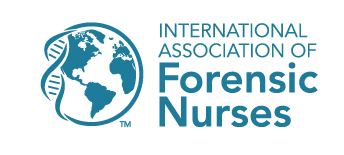Forensic Nursing Education Guidelines
Purpose
Education guidelines serve as a standardized body of knowledge for a specific area of nursing practice. They specify the minimum level of instruction required to ensure competent practice. Practitioners, teachers, and other leaders in the forensic nursing profession have developed, reviewed, and endorse the following forensic nursing education guidelines.- Sexual Assault Nurse Examiner Education Guidelines, Adult and Pediatric (updated 2025)
- Forensic Nurse Death Investigator Education Guidelines (developed 2009; published 2013)
- Intimate Partner Violence Nurse Examiner Education Guidelines (updated 2025)
- Core Competencies for Advanced Practice Forensic Nursing (2004)
Components
- Education Guidelines serve to:
- Define the patient population;
- Establish a minimum duration of instruction;
- Include recommendations for trainers or educators;
- Set forth a detailed content outline; and
- Specify recommendations for clinical preceptorship (if any).
